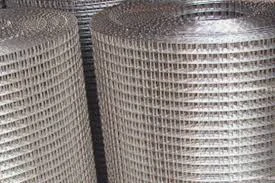nov . 09, 2024 23:59 Back to list
Guidelines for Selecting Roof Sheathing Nails for Optimal Performance and Durability
Understanding Roof Sheathing Nails Essential Components in Roofing
Roof sheathing nails are critical elements in the construction and maintenance of roofs. They serve a fundamental purpose in securing the sheathing material, such as plywood or oriented strand board (OSB), to the roof's structural framework, ensuring durability and structural integrity. In this article, we will delve into the importance of roof sheathing nails, the types available, their specifications, and installation practices.
Importance of Roof Sheathing Nails
The primary role of roof sheathing nails is to fasten the sheathing material to the rafters or trusses of a building. Proper installation of these nails is essential not only for the stability of the roofing system but also for the performance of the roof under various weather conditions. Roof sheathing provides a base for the roofing material, which can include shingles, tiles, or metal roofing, and acts as a barrier against external elements such as rain, wind, and snow.
Without adequately installed nails, the sheathing could become loose, creating potential vulnerabilities that may lead to leaks, drafts, or even structural failure in severe conditions. Therefore, knowing the correct type and size of nails to use is crucial for anyone involved in roofing projects.
Types of Roof Sheathing Nails
Roof sheathing nails come in various types and sizes, each designed for specific applications. Common types include
1. Galvanized Nails These nails resist rust and corrosion, making them ideal for roofs exposed to moisture. Galvanization extends the lifespan of the nails, ensuring long-term performance.
2. Stainless Steel Nails Though more expensive, stainless steel nails offer superior resistance to corrosion, making them an excellent choice for coastal areas or regions with high humidity.
3. Ring Shank Nails Featuring rings along the shaft, these nails provide increased holding power compared to smooth-shank nails. They are particularly beneficial for applications where shear strength is critical.
4. Collated Nails Often used with pneumatic nail guns, collated nails are pre-loaded in strips or coils, allowing for quicker and more efficient installation.
Specifications
roof sheathing nails

When selecting roof sheathing nails, it's essential to consider certain specifications to ensure optimal performance
- Length The length of roof sheathing nails typically ranges from 1.5 to 2.5 inches. The right length depends on the thickness of the sheathing material and the underlying structure. - Diameter The diameter commonly ranges from 0.120 to 0.131 inches. A thicker nail generally provides better holding power, especially in windy areas.
- Material As discussed, the material can greatly affect performance, particularly in terms of corrosion resistance.
- Head Type Nails can have flat heads or round heads, with flat heads often providing a better surface for securing roofing materials.
Installation Practices
Installing roof sheathing nails correctly is pivotal for the overall success of a roofing project. The following practices are generally recommended
1. Spacing Nails should be spaced at appropriate intervals; common practice recommends 6 inches on edges and 12 inches in the field. This spacing helps to distribute weight and stress evenly across the sheathing.
2. Angle Nails should be driven straight into the sheathing and framed elements without bending or breaking. A slight angle may be employed on steep roofs to enhance holding power.
3. Flush Driving Ensure that nail heads are driven flush with the surface of the sheathing material. If nails are over-driven, the sheathing can be compromised, resulting in potential damage.
4. Avoiding Overlap When laying sheathing, avoid overlapping seams, as this can create weak points that may lead to water intrusion.
Conclusion
In conclusion, roof sheathing nails, though seemingly small, have a monumental impact on the effectiveness and longevity of roofing systems. By understanding their types, specifications, and proper installation techniques, contractors and DIY enthusiasts alike can ensure their roofs offer the best protection against the elements, safeguarding the home for years to come. Whether you're planning a new roof or repairing an existing one, selecting the right roof sheathing nails is an integral part of the building process.
-
The Versatility of Metal Diamond Mesh for Fencing and Security
NewsApr.22,2025
-
The Essential Guide to Construction Nails for Your Projects
NewsApr.22,2025
-
Everything You Need to Know About Field Wire Fencing
NewsApr.22,2025
-
A Guide to Euro Style Fence for Modern Security and Aesthetics
NewsApr.22,2025
-
A Complete Guide to Roofing Nails: Types, Bulk Buying, And More
NewsApr.22,2025
-
A Complete Guide to Coil Razor Wire for Enhanced Security
NewsApr.22,2025









